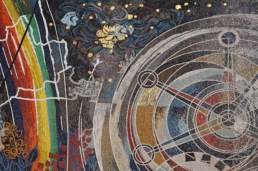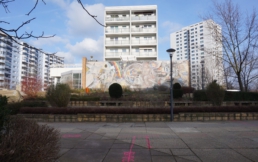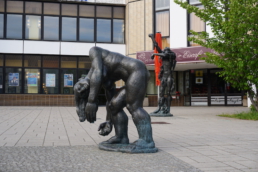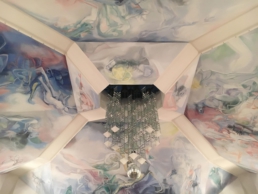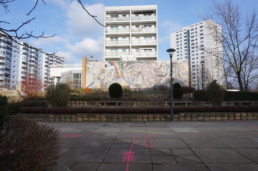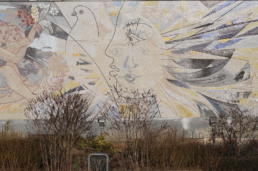On the outskirts of East Berlin, lies a man-made mountain formed from war rubble, construction debris, and demolished old houses.
Climb up to the top of it, and you’ll encounter another relic from a bygone era, but this one is all in one piece, and arguably one of Europe’s largest remaining monuments to socialist architecture.
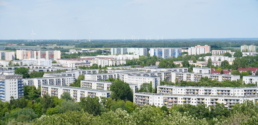
From Swamp to City
When it was built during the mid-70s, Marzahn was the biggest housing project in European history. Over a decade, the area was transformed from a swampland whose only sign of life was a nearby medieval village, to a densely populated space that provided housing for 170,000 people.
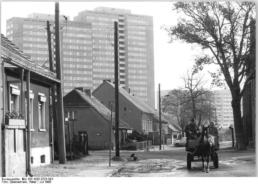
Its sheer scale was born out of necessity. After the end of WWII, East Germany suffered a housing shortage of at least 1.4 million. Meanwhile, a large proportion of the remaining accommodation were pre-1948 buildings that had no central heating or running water. With few homes built during the 50s and 60s, decades later, the number and quality of housing remained a major issue.
To battle the shortage, in 1971, GDR leader Erich Honecker pledged to build 3.5 million apartments – enough to house half of the country’s population. It was hoped that the building of whole new cities, would serve as an example of what was coined ‘real existing socialism’ – proving how the system could outdo capitalism in terms of providing for its people.
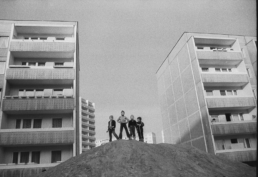
Soon plans were underway to create a utopian satellite town just a 30-minute journey from the centre of Berlin, that would epitomise socialist ideals through concretised collectivist living.
At the time, the Bauakademie, the main body of East German city planning, were under immense pressure to live up to Honecker’s pledge, which he promised to fulfil within ten years. Urbanists and architects set to work on designing a catalogue of prefabricated models that could be slotted together and erected in as little as 18 hours.
This tetris-like planning can be traced through the clouds when flying into Berlin, where the terrain is landmarked by the colossal geometric shapes that form some 60,000 apartments on the estate.
Although it is arguable that the vastness of the project can only be truly comprehended from the washing line of cable cars that stretch across from Kienberg.
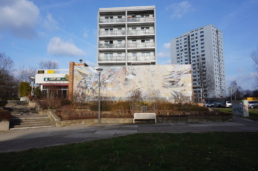
Kunst am Bau
While impressive in its own right, its size isn’t the only thing that makes Marzhan an interesting place to visit, and one could argue that once you’ve seen one Plattenbau you’ve seen them all.
Due to its close proximity to Berlin, it was shifted into the spotlight of GDR propaganda. It is for this reason that some 462 works of public art have been commissioned in the estate and the neighbouring district of Hellersdorf over the years.
Although it’s mostly the ideologically-imbued mosaics of ‘kunst am bau’ (art on buildings) that can be found here, the institutionalisation of public art during the Honecker era actually supported a wide range of styles and variety, as opposed to sticking to a traditional doctrine of socialist realism typically seen in other model estates around the East.
For example, thematic works centred on nature, were designed to off-set the assembly-line architecture of the area. Meanwhile, pieces of art celebrating the strength of communism, stand next to more critical, late-period statues that are seemingly more sorrowful than their victory-touting comrades.
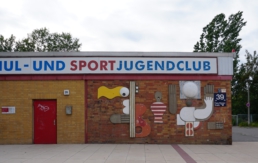
Modern scars
The sorrowfulness of the statues are in some ways emblematic of the present-day situation. After reunification, the satellite town faced new challenges that had come with economic and social transition.
But while the streets of Marzahn are much emptier than they used to be, it cannot be reduced to a mere scar of the GDR’s downfall.
There is an understandable assumption that large-scale developments in outer city areas are monotonous and devoid of history or culture, and fail to retain anything of architectural or artistic value.
However in Marzahn there are an abundance of buildings new and old, artworks public and private, that prove quite the contrary.
